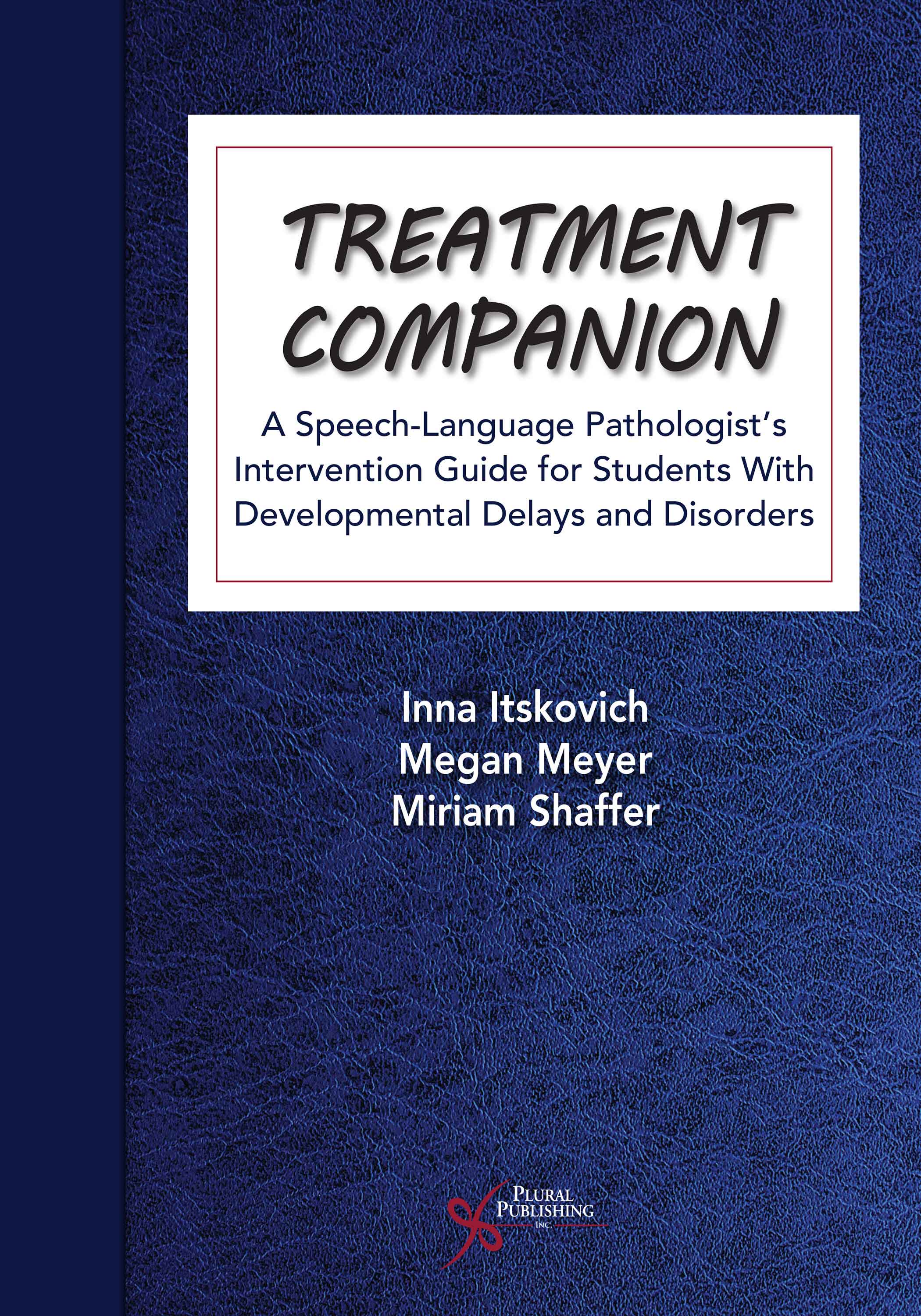
Treatment Companion: A Speech-Language Pathologist's Intervention Guide for Students With Developmental Delays and Disorders
First Edition
Inna Itskovich, Megan Meyer, Miriam Shaffer
Details: 274 pages, B&W, Softcover, 8.5 " x 11"
ISBN13: 978-1-63550-481-1
© 2023 | Available
Purchase
Whether you’re working with a new student and don’t know where to begin, or you have a long-term client and you’re feeling stuck, Treatment Companion: A Speech-Language Pathologist’s Intervention Guide for Students With Developmental Delays and Disorders provides ideas and strategies for a variety of common language goals. Speech-language pathologists (SLPs) often face the challenge of adapting interventions to meet the needs of students with severe or complex disorders and diagnoses. As seasoned clinicians, the authors fuse their real-world experience with up-to-date research to create a robust road map for customizing SLP intervention strategies.
User friendly and straightforward, the Treatment Companion offers a conversational approach to identifying options and goals that meet students where they are, whether they are visual or kinesthetic learners, oral speakers or AAC users, engaged or distracted, from birth to age 21. With easy-to-navigate headings, examples, and visuals, this guide can be consulted on an as-needed basis. The suggestions and strategies are accessible and innovative, often not requiring any specialized supplies to implement.
The Treatment Companion offers both novice and experienced clinicians a valuable tool to support their clients in achieving the highest level of communication possible.
Key Features
- Language goals are divided into four levels that are aligned with developmental milestones
- Detailed figures feature examples of intervention resources and strategies (color versions provided on the companion website)
- Steps Toward Mastery outlines a progression for guiding students to mastery of a goal, from introduction of a skill to achieving independence and generalizing the skill
- Activities in Treatment offers suggestions for working on skills through specific therapy activities
- Demystifying Augmentative and Alternative Communication appendix provides an approachable overview and example scenarios for those new to AAC
Plural Plus Online Ancillary Materials
For students: Color versions of some of the figures
Review
"Written by experienced speech-language pathologists (SLTs) and described as a speech-language pathologist’s best friend, the Treatment Companion serves as a therapy guide for SLTs working with children and young people who have communication delays and/or disorders.
The book is aimed at colleagues who are new to the profession as well as experienced SLTs. It not only contains a guide to gathering case histories, carrying out assessments, target setting and writing session plans but also provides a wide range of therapy ideas and strategies which would be useful for experienced therapists looking for fresh ideas.
Serving as a reference resource based on up-to-date evidence, the book outlines goals based on a developmental hierarchy, making it easy to dip in and out of with specific children in mind rather than reading it from cover to cover. It includes strategies for teaching a wide range of skills from developing a basic five-word vocabulary to more complex sentence structures and figurative language.
The Companion provides useful information addressing factors which affect treatment such as echolalia, physical disabilities, augmentative and alternative communication (AAC) and bilingualism. Under this section, there is some very basic advice for working with deaf children. It was encouraging to see that, as part of this advice, the authors have highlighted language deprivation as an area which should be targeted at an early stage by the introduction of sign language during the critical period for language acquisition. While this book is not specifically aimed at SLTs working with deaf children, it serves as a useful tool for therapists who possess the knowledge to adapt strategies for this client group.
This is an exceptionally detailed therapy manual and, as such, would be an essential addition to an academic or speech therapy service’s library."
—Deborah Gutteridge, Hadleigh Clinic, Essex, UK, in ENT & Audiology News (March/April 2024)
Preface
Acknowledgments
About the Authors
Reviewers
I. Introduction: How to Use the Treatment Companion
Before You Begin
Where to Begin/Choosing Goals
Aligning to the Common Core State Standards
Targeting Goals
Steps Toward Mastery
Activities in Treatment
References
II. What You Need to Know
General Guidelines
Meeting a Student for the First Time
Developmental Hierarchy
Assessment
Progress Monitoring
Prompt Hierarchy
Modeling Appropriate Communication
Student Factors Affecting Treatment
Echolalia
Perceived Negative Behavior
Deaf/Hard of Hearing (DHH)
Augmentative and Alternative Communication (AAC)
Physical Disabilities
Bilingualism and Multiculturalism
Helpful Tips
Building Relationships With School Staff and Parents
Setting Yourself Up: Organization
Suggestions of Supplies, Books, Toys, and Games
References
III. Level I
Speech, Manual Signs, or Aided AAC?
Speech
Unaided AAC
Aided AAC
Note About the Goals in Level I
Attention to Modeling
Steps Toward Mastery
Activities in Treatment
Exploring
Steps Toward Mastery
Activities in Treatment
Five-Word Vocabulary
Steps Toward Mastery
Activities in Treatment
10-Word Vocabulary
Steps Toward Mastery
Activities in Treatment
20-Word Vocabulary
Steps Toward Mastery
Activities in Treatment
50-Word Vocabulary
Steps Toward Mastery
Activities in Treatment
References
IV. Level II
Two-Word Utterances
Steps Toward Mastery
Activities in Treatment
Actions
Steps Toward Mastery
Activities in Treatment
Three-Word Utterances
Steps Toward Mastery
Activities in Treatment
Expanding Vocabulary
Steps Toward Mastery
Activities in Treatment
Sentences in Present Tense
Steps Toward Mastery
Activities in Treatment
Concrete Simple Wh- Questions
Steps Toward Mastery
Activities in Treatment
Conceptual Simple Wh- Questions
Steps Toward Mastery
Activities in Treatment
References
V. Level III
Possessive ’s
Steps Toward Mastery
Activities in Treatment
Prepositions
Steps Toward Mastery
Activities in Treatment
Pronouns
Steps Toward Mastery
Activities in Treatment
Past Tense Verbs
Steps Toward Mastery
Activities in Treatment
Attributes
Steps Toward Mastery
Activities in Treatment
Grammatical Sentences
Steps Toward Mastery
Activities in Treatment
Yes and No Questions
Steps Toward Mastery
Activities in Treatment
Short Narrative
Steps Toward Mastery
Activities in Treatment
Simple Problem Solving
Steps Toward Mastery
Activities in Treatment
References
VI. Level IV
Introduction to Complex Wh- Questions
Complex Wh- Questions: Why Questions
Steps Toward Mastery
Activities in Treatment
Complex Wh- Questions: When Questions
Steps Toward Mastery
Activities in Treatment
Complex Wh- Questions: How Questions
Steps Toward Mastery
Activities in Treatment
Introduction to Detailed Narrative
Detailed Narrative: Story Grammar Markers
Steps Toward Mastery
Activities in Treatment
Detailed Narrative: Narrative Recall and Retell
Steps Toward Mastery
Activities in Treatment
Detailed Narrative: Sequencing
Steps Toward Mastery
Activities in Treatment
Introduction to Verbal Analogies
Verbal Analogies: Categories
Steps Toward Mastery
Activities in Treatment
Verbal Analogies: Object Function
Steps Toward Mastery
Activities in Treatment
Verbal Analogies: Synonyms and Antonyms
Steps Toward Mastery
Activities in Treatment
Verbal Analogies: Associations
Steps Toward Mastery
Activities in Treatment
Introduction to Figurative Language
Figurative Language: Idioms
Steps Toward Mastery
Activities in Treatment
Figurative Language: Multiple Meaning Words
Steps Toward Mastery
Activities in Treatment
Compound and Complex Sentences
Steps Toward Mastery
Activities in Treatment
Identifying the Problem
Steps Toward Mastery
Activities in Treatment
Identifying the Cause/Making Inferences
Steps Toward Mastery
Activities in Treatment
References
Appendix: Demystifying Augmentative and Alternative Communication
What You Need to Know About AAC
The Right to Communicate
What Does AAC Include?
Dispelling Common Myths About AAC
Communicative Competence
Comprehensive Assessment Leads to Comprehensive Intervention
Choosing Words to Target
Fostering Collaboration
Training
Creating a Culture of AAC
References
Index
Purchase of Treatment Companion: A Speech-Language Pathologist’s Intervention Guide for Students With Developmental Delays and Disorders comes with access to supplementary resources on a PluralPlus companion website.
The companion website is located at:
https://www.pluralpublishing.com/publication/tcslpig
STUDENTS:
The student resources include color versions of the figures presented in the text.
To access the student resources, you must register on the companion website and log in using the access code located in the front of your textbook.
*Note for students: If you have purchased this textbook used or have rented it, your access code will not work if it was already redeemed by the original buyer of the book. Plural Publishing does not offer replacement access codes for used or rented textbooks.
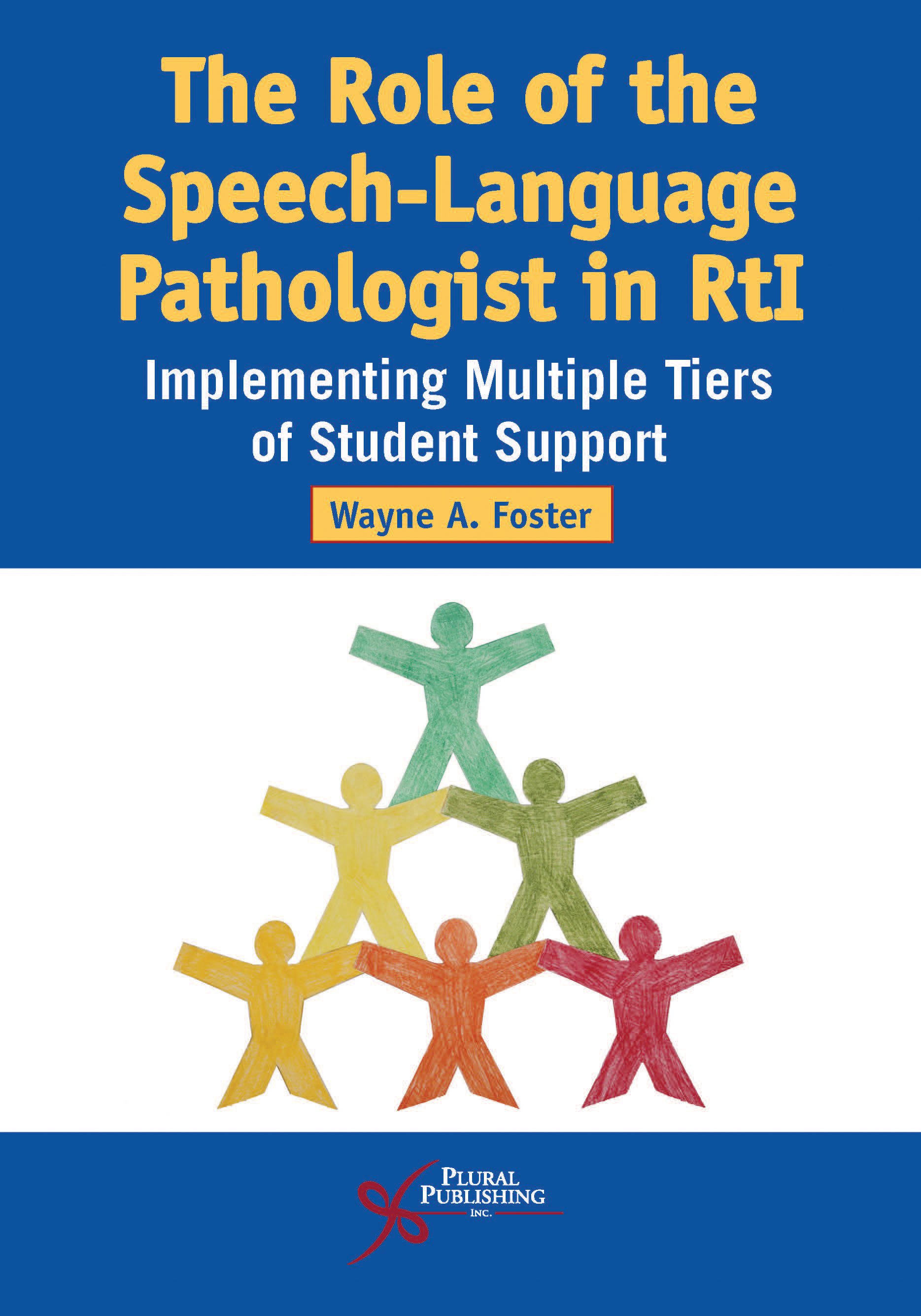
The Role of the Speech-Language Pathologist in RtI: Implementing Multiple Tiers of Student Support
First Edition
Wayne A. Foster
Details: 226 pages, B&W, Softcover, 7" x 10"
ISBN13: 978-1-63550-021-9
© 2018 | Available
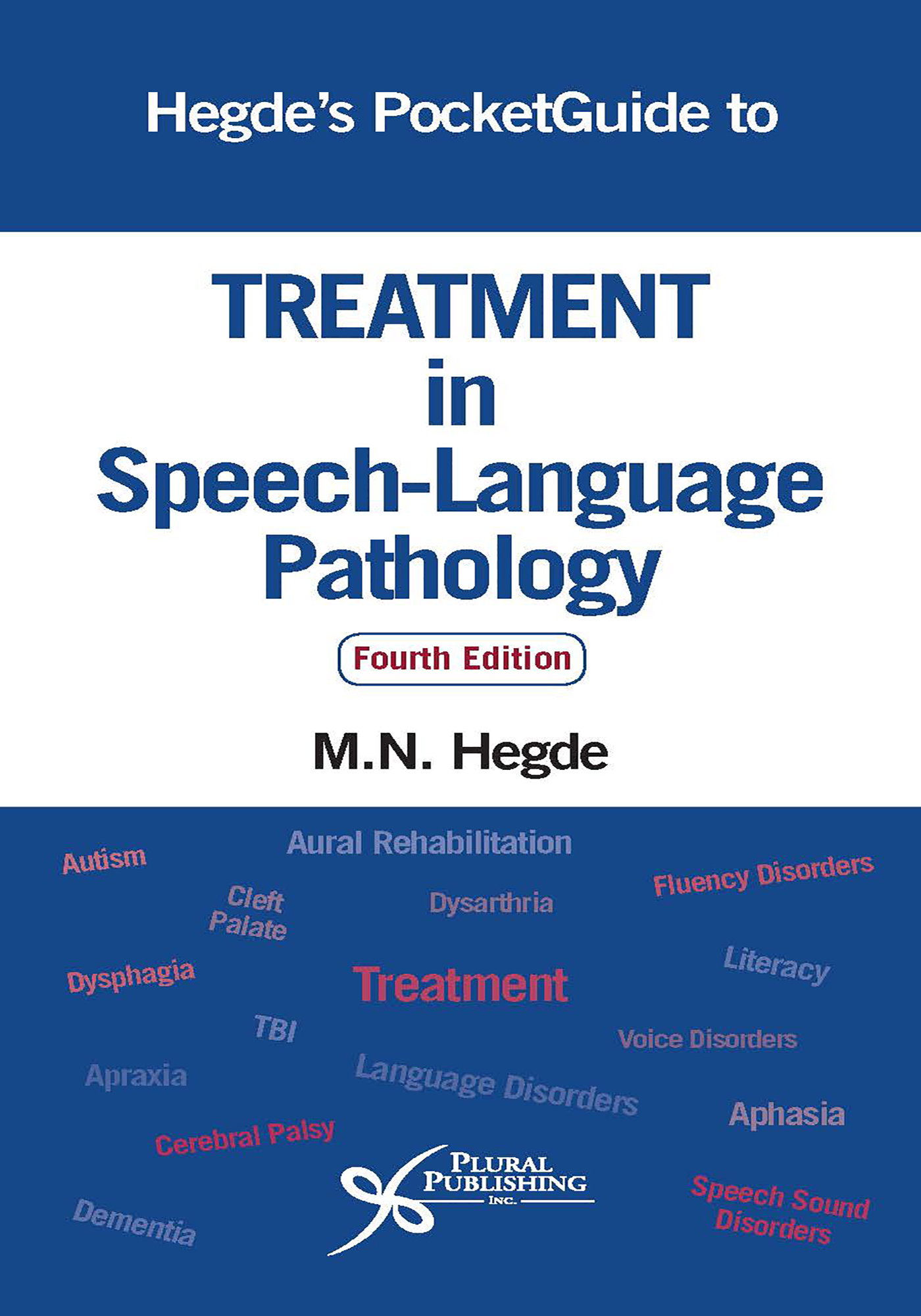
Hegde's PocketGuide to Treatment in Speech-Language Pathology.
Fourth Edition
M.N. Hegde
Details: 612 pages, 2-Color, Softcover, 4.5" x 8"
ISBN13: 978-1-94488-312-6
© 2018 | Available
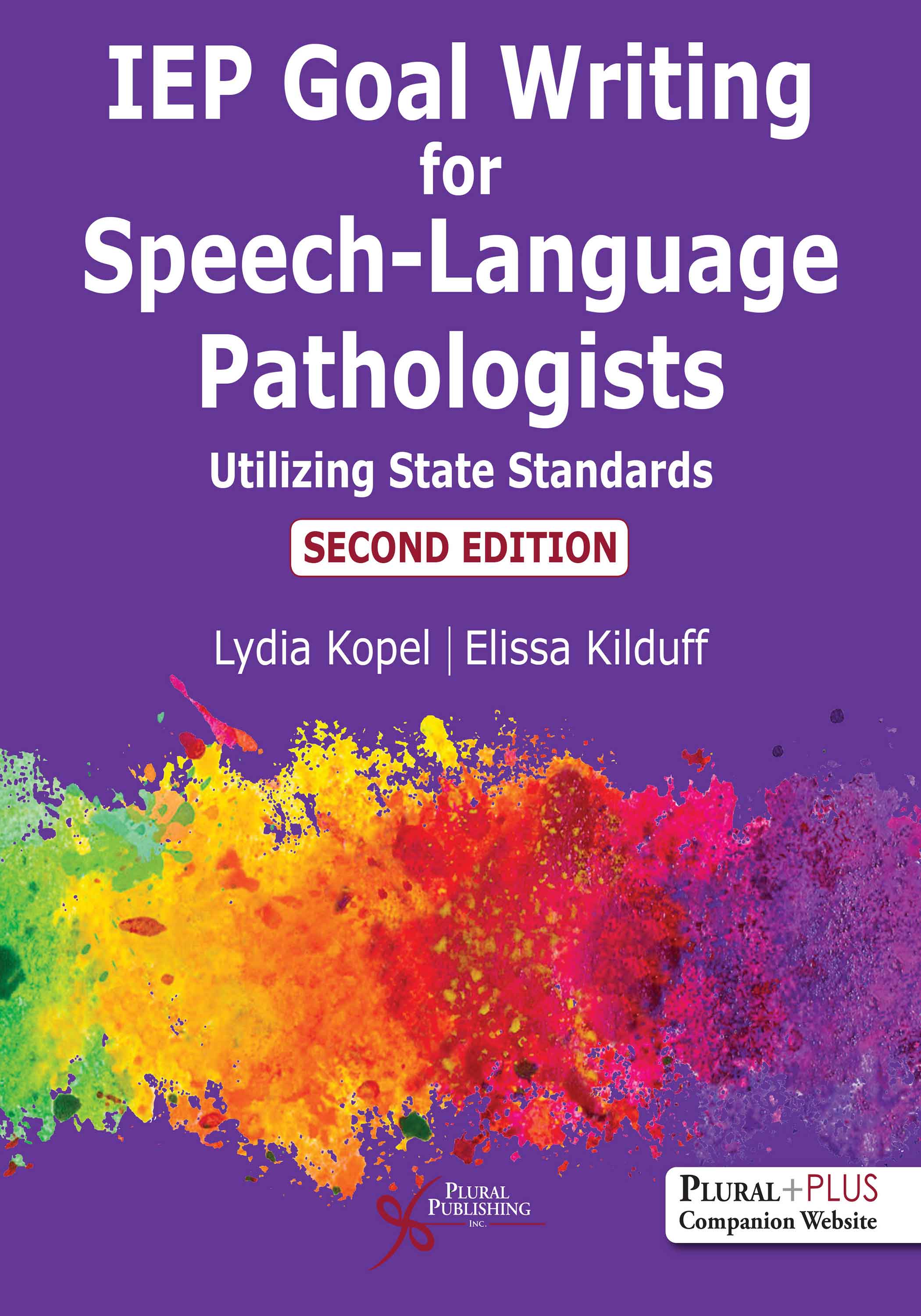
IEP Goal Writing for Speech-Language Pathologists: Utilizing State Standards
Second Edition
Lydia Kopel, Elissa Kilduff
Details: 243 pages, B&W, Softcover with layflat binding, 8.5" x 11"
ISBN13: 978-1-63550-202-2
© 2021 | Available
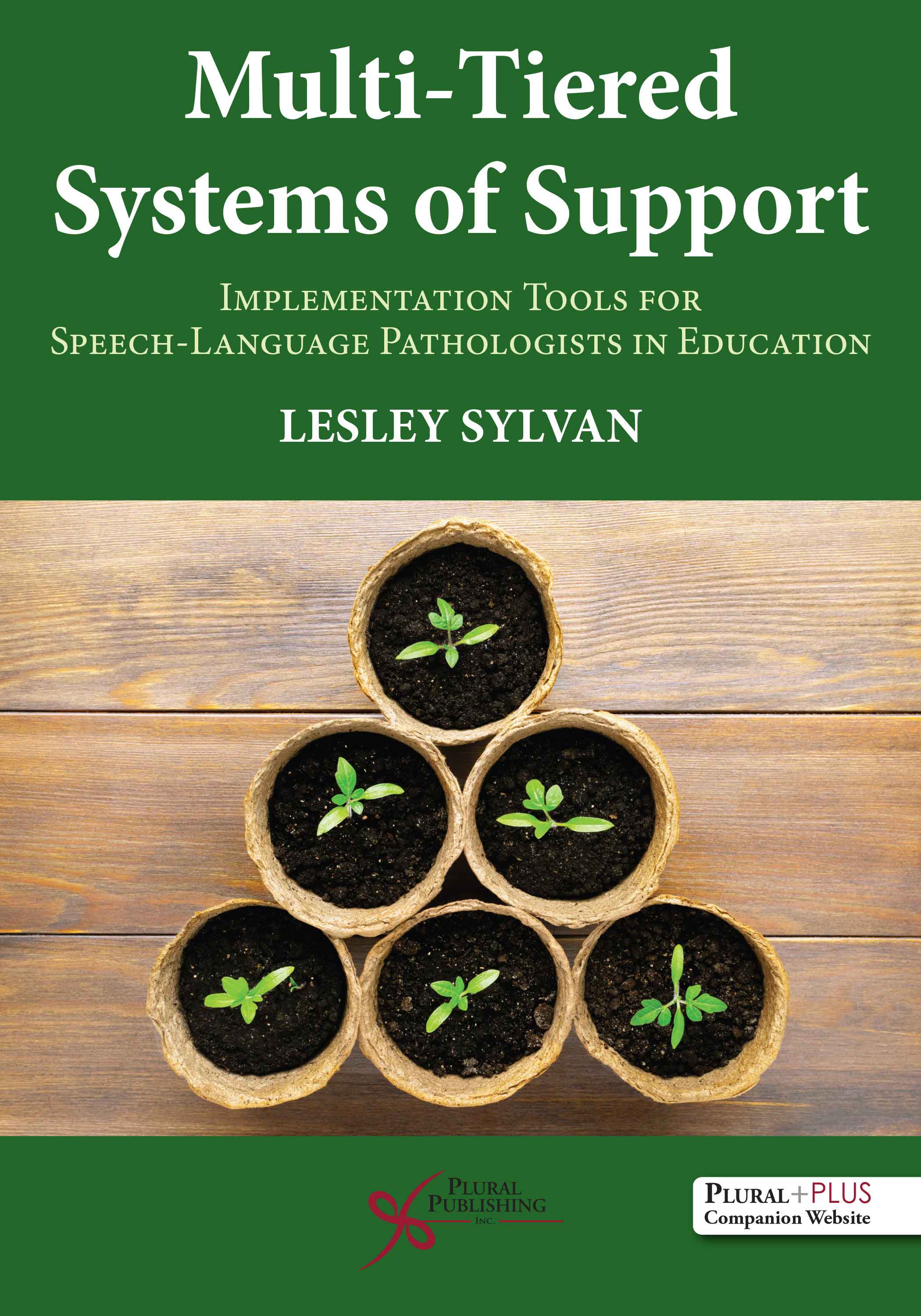
Multi-Tiered Systems of Support: Implementation Tools for Speech-Language Pathologists in Education
First Edition
Lesley Sylvan
Details: 247 pages, B&W, Softcover, 7" x 10"
ISBN13: 978-1-63550-294-7
© 2021 | Available
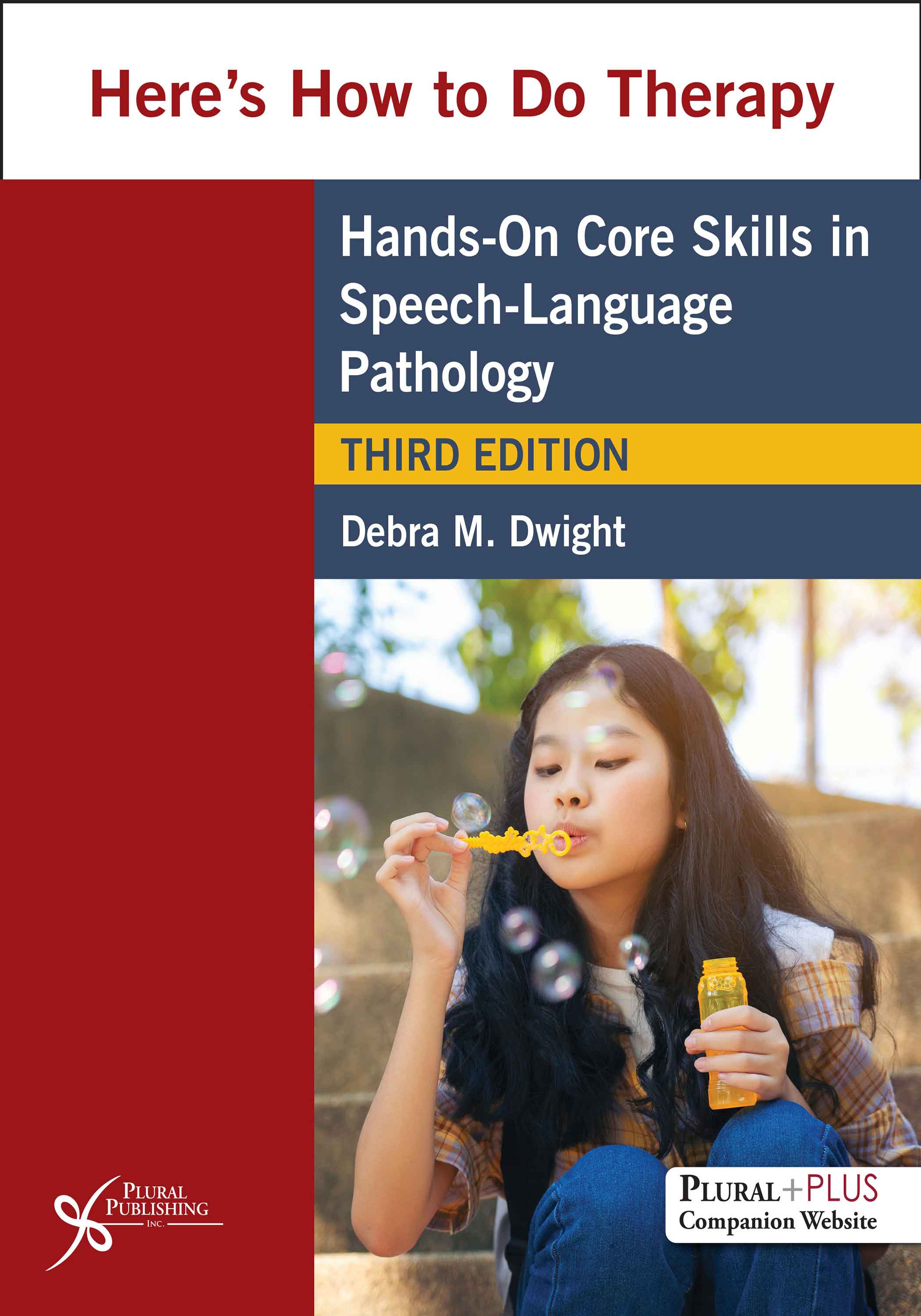
Here's How to Do Therapy: Hands on Core Skills in Speech-Language Pathology
Third Edition
Debra M. Dwight
Details: 460 pages, B&W, Softcover, 8.5" x 11"
ISBN13: 978-1-63550-320-3
© 2022 | Available
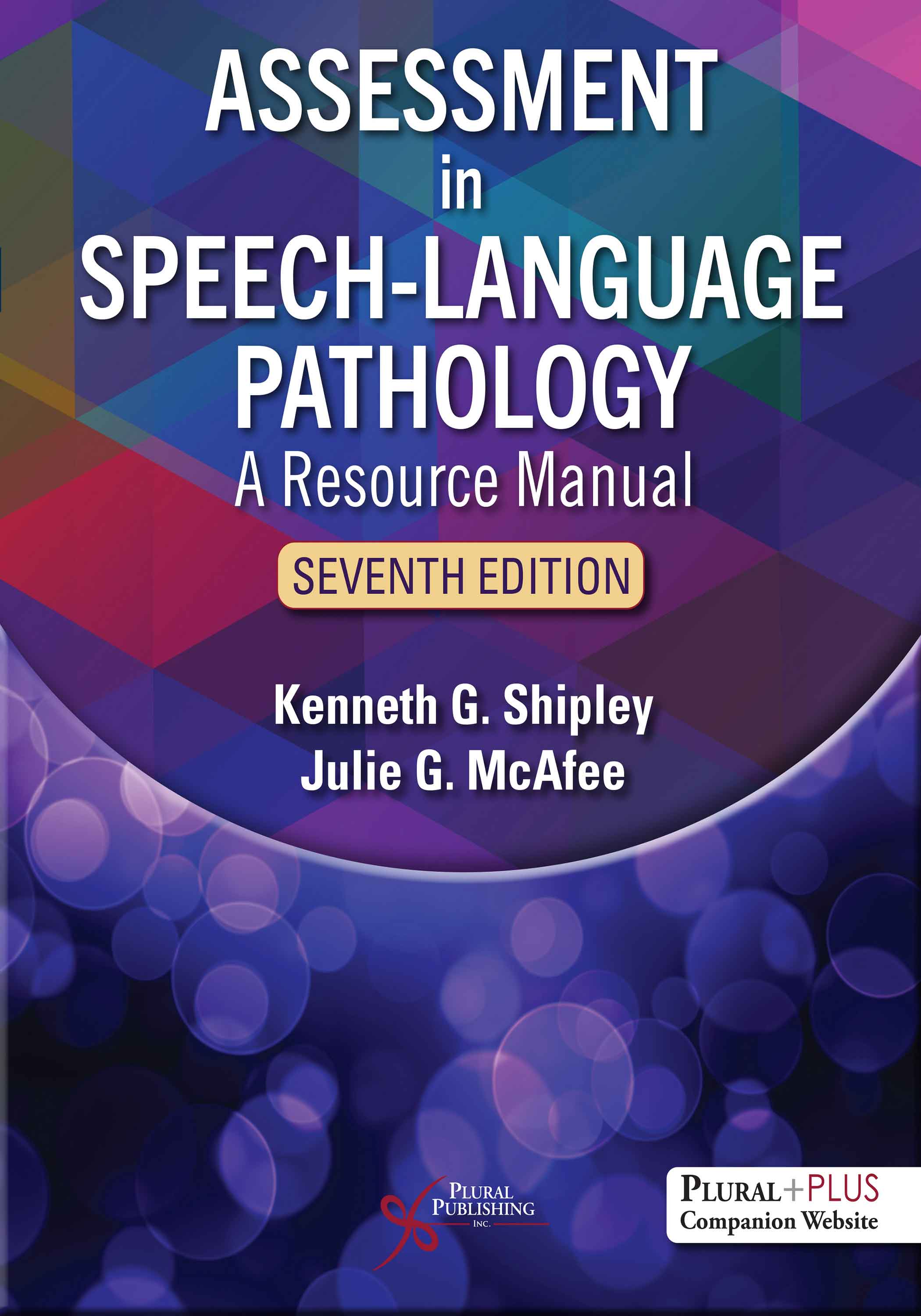
Assessment in Speech-Language Pathology: A Resource Manual
Seventh Edition
Kenneth G. Shipley, Julie G. McAfee
Details: 660 pages, Full Color, Softcover with layflat binding, 8.5" x 11"
ISBN13: 978-1-63550-710-2
© 2025 | Available
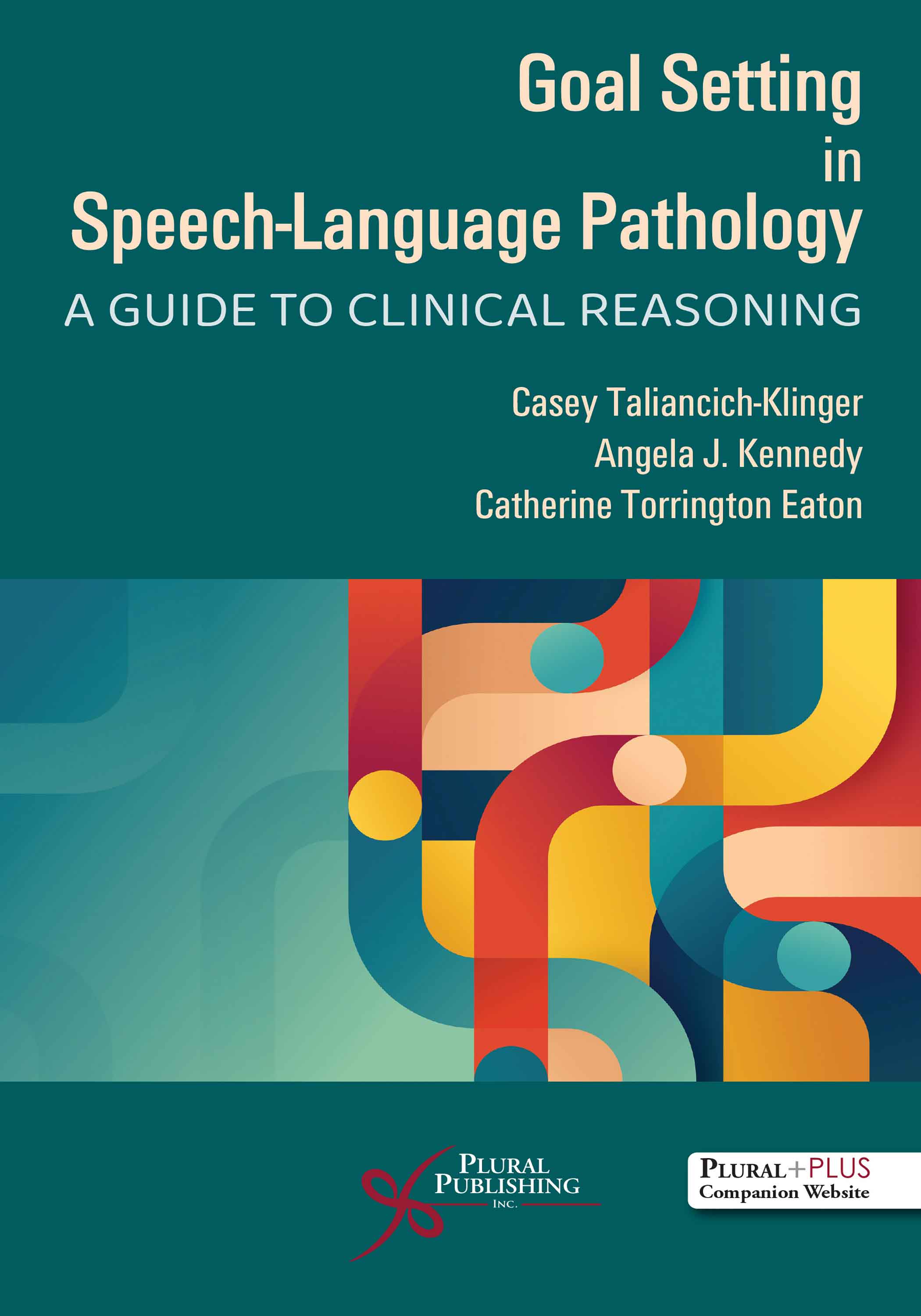
Goal Setting in Speech-Language Pathology: A Guide to Clinical Reasoning
First Edition
Casey Taliancich-Klinger, Angela J. Kennedy, Catherine Torrington Eaton
Details: 114 pages, B&W, Softcover, 6" x 9"
ISBN13: 978-1-63550-432-3
© 2025 | Available
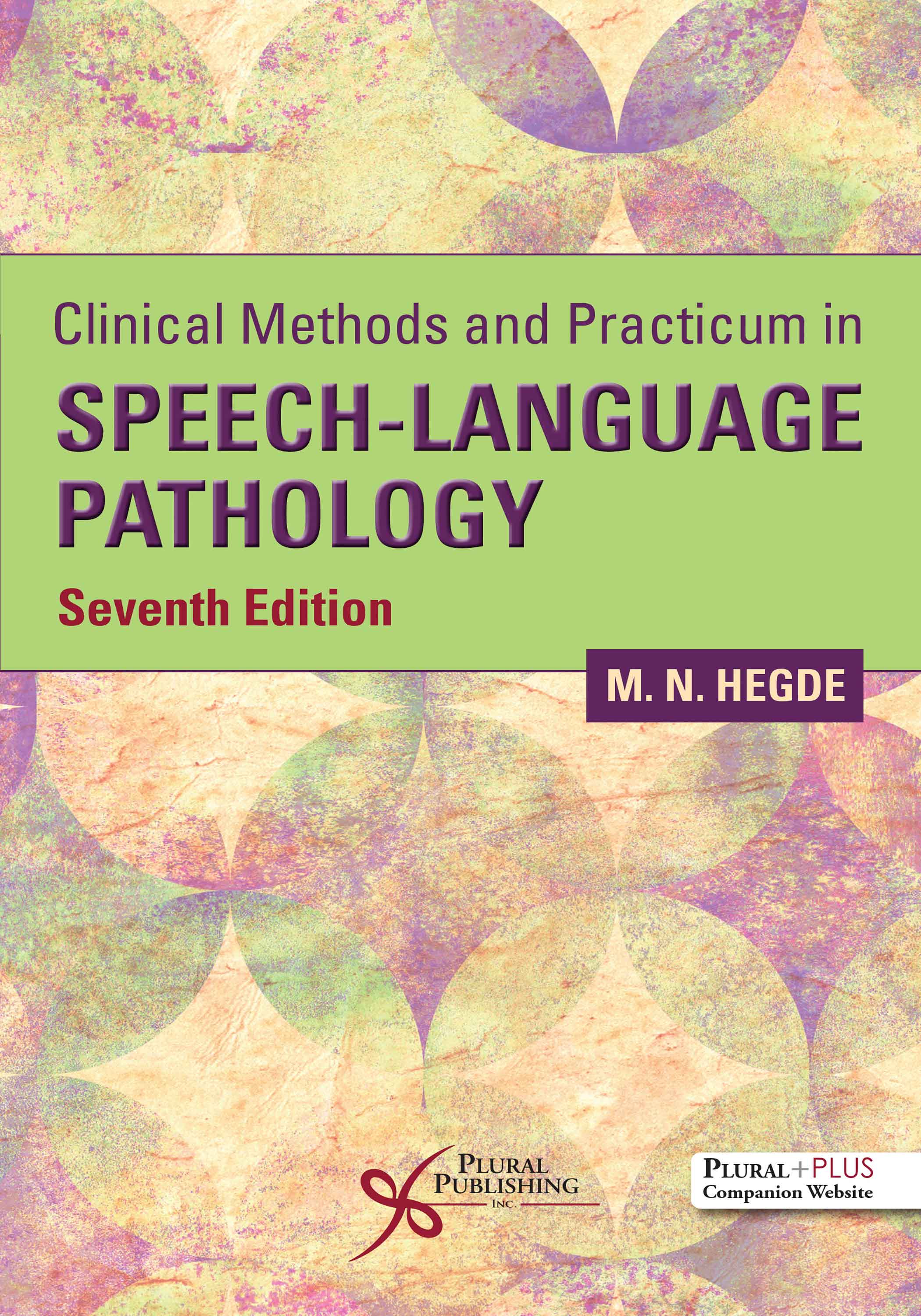
Clinical Methods and Practicum in Speech-Language Pathology
Seventh Edition
M.N. Hegde
Details: 413 pages, B&W, Softcover, 6" x 9"
ISBN13: 978-1-63550-691-4
© 2025 | Available
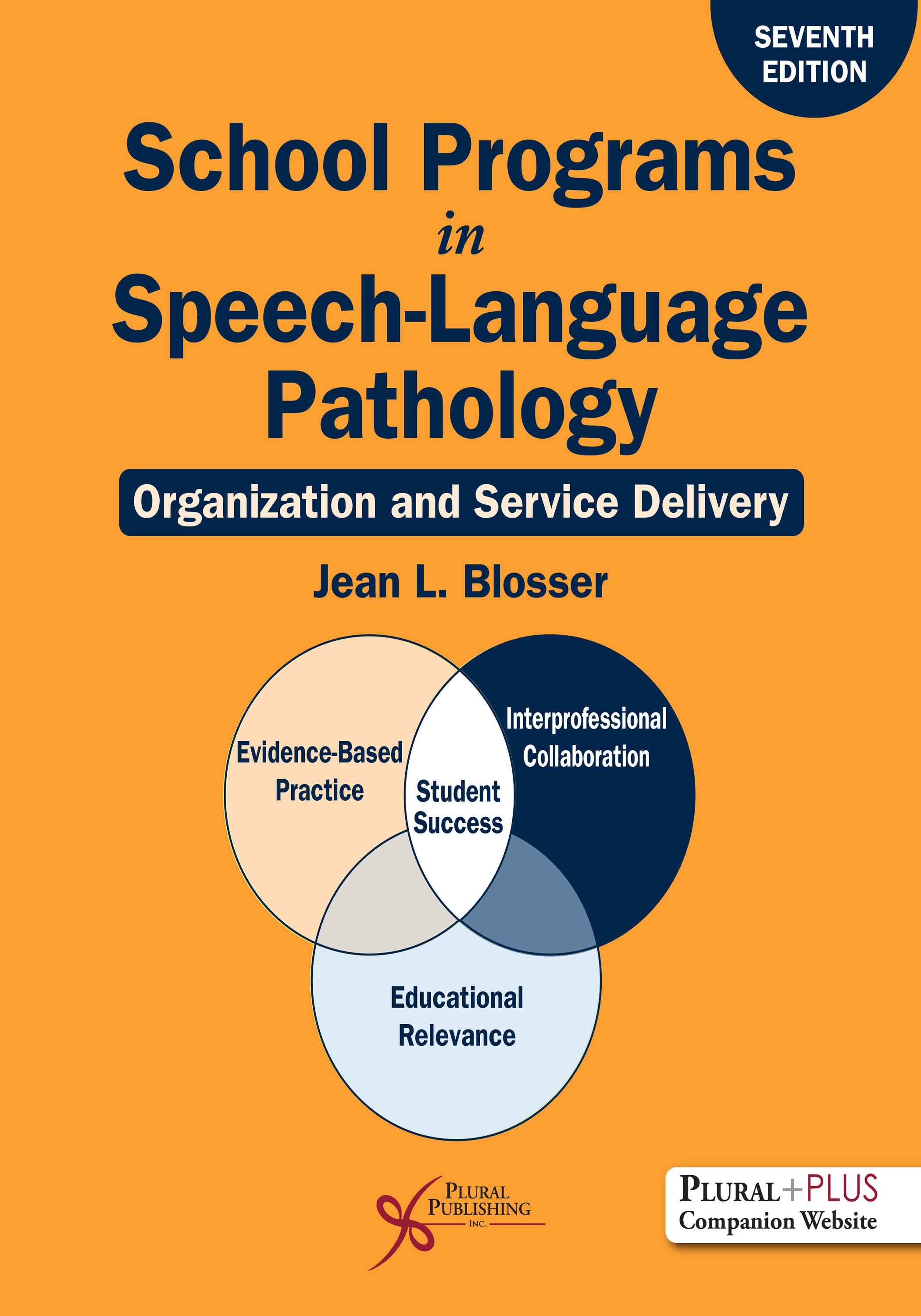
School Programs in Speech-Language Pathology: Organization and Service Delivery
Seventh Edition
Jean Blosser
Details: 457 pages, B&W, Softcover, 8.5 " x 11"
ISBN13: 978-1-63550-611-2
© 2025 | Available
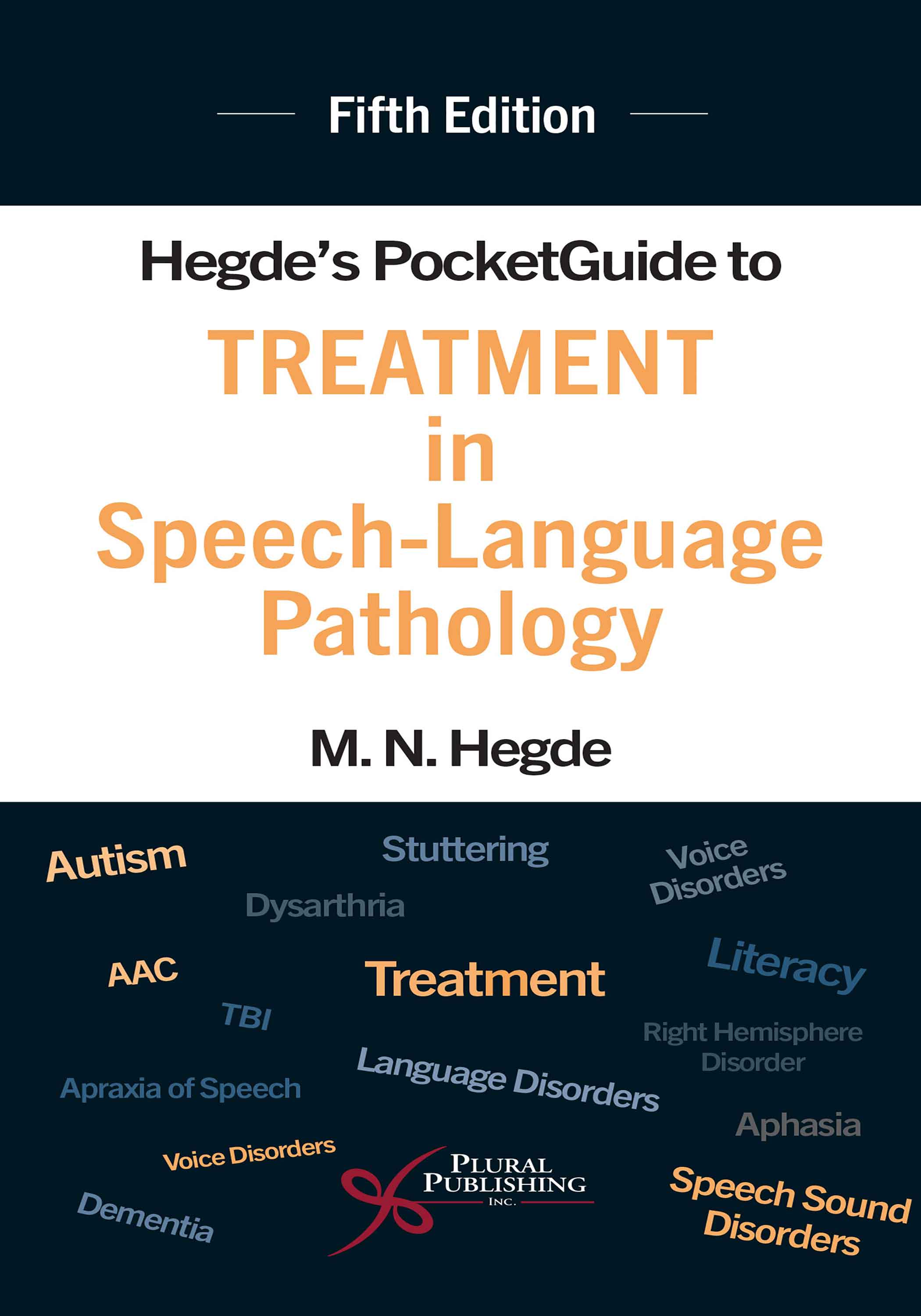
Hegde's PocketGuide to Treatment in Speech-Language Pathology
Fifth Edition
M.N. Hegde
Details: 475 pages, 2-Color, Softcover, 4.5" x 8"
ISBN13: 978-1-63550-786-7
© 2026 | Coming Soon
Release Date: 10/01/2025



